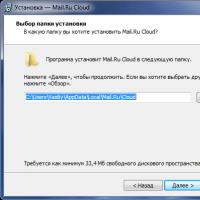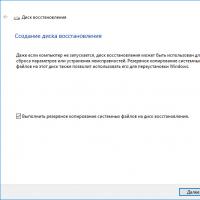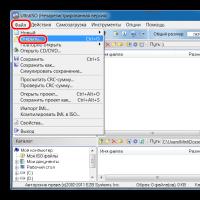Push notification: what is it and how to disable it
Every owner of a modern smartphone, tablet, laptop, or computer is familiar with the so-called “guns”. For some they are very necessary for a certain activity, for others they distract and irritate, for others they play an important role in promoting something. One way or another, it’s worth understanding their essence, varieties and, of course, methods of getting rid of these annoying pop-up windows.
What are push notifications
The definition of notifications we are interested in could be as follows:
- short pop-up messages on the gadget screen, reminding the user about an important event, an update in one of the applications installed on the smartphone;
- a popular marketing tool - icons not only do not allow the user to forget about the application downloaded to the device, but also inform the person about any news, promotions, personal messages, etc.;
- a type of technology that distributes information from a server to users;
- specifically for mobile devices - windows with brief information that pop up at the top of the screen on a locked display;
- for PCs and laptops (web-push is a relatively new phenomenon), browser notifications are pop-up windows on the desktop, directed by the site for which the user has subscribed.

What are push notifications? This issue became widely interested after Apple introduced a service for sending quick notifications to the user APNS (Apple Push Notification Service) for iOS 3. It is worth noting that before Apple, the technology had already been introduced by Google for Android devices - almost a year earlier.
Mobile push notification
Thus, smartphones from different corporations have their own specific push notification services. Let's briefly touch on them all. As already mentioned, the service from Apple is called APNS. It also works for the Safari browser and OS X. Push notifications for iPhone and iPad are available in the following varieties:
- badges - a circle symbol appears on the application icon in the menu with the number of new notifications or other information;
- banners - a curtain with some information appears at the top of the screen or on the flashing display in sleep mode (regular banners disappear automatically, but certain actions must be taken with warnings);
- audio, audio/banners - a notification sound notifies the user about a new event (you can set it to appear in conjunction with a banner).

The very first (2008) development of such notifications from Google for Android was called C2DM (Cloud to Device Messaging). In 2012 it was replaced by GCM (Google Cloud Messaging). This is what allows push notifications to appear in Chrome applications. In the Android OS, known for its openness, there are no standard forms for “guns” - they, with the user’s consent, appear as the developers of a particular application planned them - a banner similar to the iPhone’s, a line at the top of the screen, a window in the drop-down “curtain” " etc.
- toast - a clickable 10-second banner at the top of the screen;
- live title - an icon with the number of notifications on the application icon;
- raw - arbitrary information from a specific (usually gaming) mobile program.
Push notifications in the browser
There is one difference between push notifications for desktop PCs and laptops and mobile ones - messages are sent not from the application, but from the website. The GCM and APNs services (from Google and Apple, respectively) are responsible for sending them.

Here a small window appears on the desktop on top of other windows with some text - when you click on it, the user goes to the destination site of this “gun”. A standard computer push notification consists of a title, text, a small image, and a link. Subscribing to such an alert is simple - when you open a website in your browser that offers such alerts, a pop-up message appears asking permission to send “guns.” You can subscribe in the “Subscribe to news” section.
Disabling push banners on iPhone
To get rid of all the annoying “guns” at once, you need to activate the “Do not disturb” mode using the slider in “Settings”. However, in this case, you will not hear both the incoming call and the SMS notification. If you want to disable push notifications from any specific application, then the following scheme will be useful to you: “Settings” - “Notifications” - select the desired program. On "Notification Allowance" make the slider inactive.
Disable push notifications for Android
Disabling “guns” on Android is also not at all difficult: go to “Settings”, then to “Application Manager”, find the program from which you do not need notifications. Uncheck the "Show notifications" box. Confirm your decision in the pop-up window.
Disabling "guns" in the browser
Now let's touch on how to disable push notifications on desktop PCs. Let's look at three popular browsers.
In Google Chrome you can do this like this:
- Go to the "Settings" section, then "Show advanced".
- Here in “Personal Data” you need to click on “Content Settings”.
- Scroll to the "Alerts" section. Here you need to check the box “Do not show notifications on sites”, and then click on “Done”. Here you can also set exceptions for “guns” from your favorite sites.

Another option is to right-click on the notification you received and select "Disable notifications from..."
In Yandex.Browser, push notifications from VKontakte and Yandex.Mail can be removed on the main page of Settings in the Notifications - Configure section. Here you just need to uncheck the “Notifications enabled” checkbox. For other sites, in “Settings” you should find “Advanced settings”, then “Personal information” and “Content settings”. In "Notifications" you can either disable all "guns" or make exceptions for some sites. In Safari, go to Settings - Notifications. Then find the site you are interested in and check the “Refuse” box.
Push notifications are both a useful mechanism that allows you to always stay up to date with affairs and news, and a system of intrusive, annoying reminders about unimportant events. With the help of the simple instructions mentioned in this article, you can get rid of “guns” on your device once and for all.
 Cloud storage Cloud Mail
Cloud storage Cloud Mail 25 online tools to generate easy-to-pronounce and random passwords
25 online tools to generate easy-to-pronounce and random passwords Dexpot - additional virtual desktops
Dexpot - additional virtual desktops Visual bookmarks Top-Page
Visual bookmarks Top-Page The browser now has notifications from social networks and support for e-books
The browser now has notifications from social networks and support for e-books Windows 10 Recovery Disk
Windows 10 Recovery Disk How to create a bootable USB flash drive
How to create a bootable USB flash drive